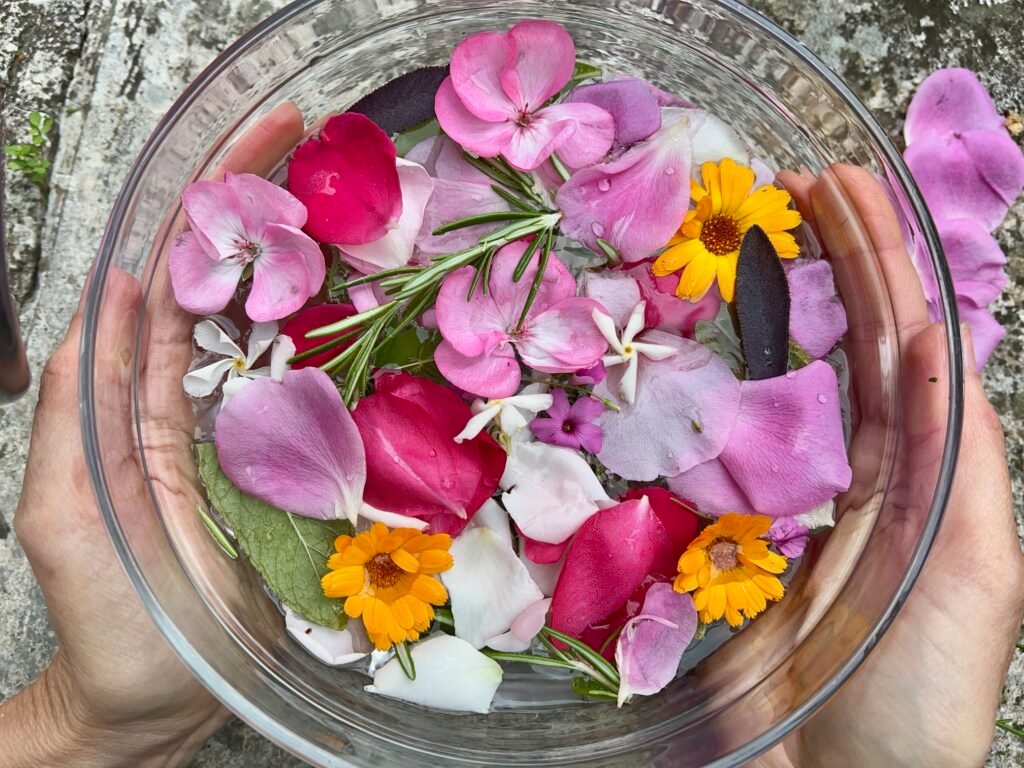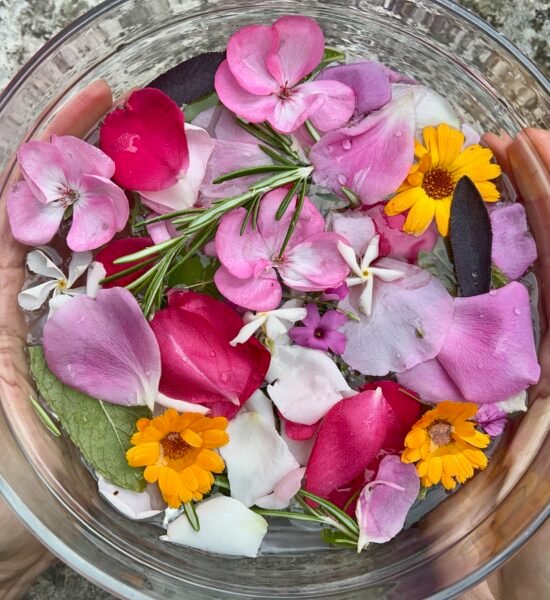San Giovanni Battista (St. John the Baptist) is a significant figure in Christian tradition, and his feast day on June 24 has been celebrated in Abruzzo with various rituals and customs that blend ancient pagan rites with Christian beliefs. These San Giovanni celebrations in Abruzzo continue to echo both reverence and folklore.
Many rural traditions preserve summer solstice rituals in Abruzzo, such as leaping over bonfires (a symbol of purification), collecting magical herbs on Saint John’s Eve, and preparing “aqua di San Giovanni” with wildflowers and dew, left out overnight.
How Abruzzo celebrates Saint John’s Day speaks to the deep interweaving of agricultural rhythm and spiritual symbolism. June 24, dedicated to St. John the Baptist, is close to the summer solstice, a time traditionally associated with various pagan rites celebrating the sun and fertility, which the Christian Church later reshaped into its own symbolism. In Abruzzo, these ancient practices have been incorporated into the Christian festival, creating an intricate mosaic of legends, beliefs, magic, religion, and rural traditions—many of which now live on only in the memories of the elderly and the occasional local San Giovanni festival.

Traditional San Giovanni rituals in Abruzzo: fire and water
Sun, moon, fire, water, and plants were the main elements connected to St. John the Baptist’s Day traditions in Abruzzo. Water collected on June 24 was believed to acquire incredible powers, purifying and enhancing the natural properties of everything. On windowsills and terraces, containers filled with water were placed out overnight and used the next morning to cure headaches and rheumatic pains.
The best remedy, however, was said to be bathing in the dew on the morning of June 24. In many small villages and towns in Abruzzo, it was a tradition to roll on dew-covered meadows and lay out laundry to benefit from its properties. Dew was believed to cure ailments and enhance the health of humans and animals alike. You can still hear from the elderly how lying on dew-covered grass cured skin conditions; women wanting to avoid headaches or have beautiful hair combed their hair at dawn with the dew, and the sick were covered with sheets damp from the morning condensation in the fields.
In Bocca di Valle, near Guardiagrele (CH), close to the scenic San Giovanni waterfall, you can still see the remains of a chapel dedicated to the saint. On the Eve of Saint John’s Day, locals once walked to the chapel to say a prayer and wash their faces in the waterfall.

Healing Herbs
Collecting herbs for Saint John’s Day in Abruzzo was one of the most important rituals on the night of June 23. Each medicinal plant was believed to have special properties that were enhanced on that date. St John’s Wort helped to ward off demons; mugwort was used against the evil eye; wild fennel was a powerful amulet to sharpen the eye against deceit; fern granted supernatural strength and wisdom—its flower was believed to bloom only on Saint John’s Eve, visible for one fleeting moment.
Women collected these herbs, immersed them in water and left them outside overnight to create a fragrant, magical water, known as “acqua di San Giovanni”, to enhance beauty, health, and protection against the evil eye. Single young women washed with this water while thinking of their beloved to ensure marriage within the year. This ancient Saint John’s Day ritual in Abruzzo is one of the few that has survived to this day, although its original meaning has waned over time. Another tradition that still lives on is gathering green walnuts for nocino liqueur.
Many villages in Abruzzo had stories about witches and evil spirits gathering in dark, isolated places on Saint John’s Eve to collect powerful herbs for their malevolent rituals, so the dew and water traditions performed during this time were believed to protect against these forces.
By David Ferrante is a writer, sociologist, and a passionate researcher of Abruzzo’s culture and traditions. He is the author of Tradizioni, Riti E Sortilegi del 24 giugno. San Giovanni Battista nella cultura popolare abruzzese (published by Tabula Fati).
Where to celebrate San Giovanni Battista in Abruzzo
Civitella Roveto (AQ)
The feast of San Giovanni Battista, the town’s patron saint, is one of Civitella’s biggest celebrations. In the days leading up to June 24, residents decorate the historic center and main streets. On the feast day, locals gather at 4 AM on the banks of the Liri River for Holy Mass and to wash their feet and faces, symbolizing the baptism rite. Many also fill jars with the river water to take home. The full programme is published on the organisers committee page.
CATA – Compagnia Tradizioni Teatine
Every year, the folkloristic group Compagnia Tradizioni Teatine hosts a night of San Giovanni – Festa dei Compari a Fiore in Torrevecchia Teatina (CH). Based on solid historical and anthropological research, the celebration re-enacts old Abruzzese traditions. The evening includes a traditional San Giovanni dinner, the ritual of exchanging ramajette, and the purification rite with oak branches and water. The celebration culminates with jumping over the San Giovanni bonfire and traditional dances. For more details and to book your spot at the event see the Compagnia Tradizioni Teatine Facebook page.
Astra – Associazione Studi Tradizioni Regionali Abruzzesi
The association celebrates the dawn of San Giovanni on the beach in Pescara with a concert and making of the magical aqua di San Giovanni. In the evening, they invite everyone to the rito di comparatico to exchange the friendship ramajette. The full programme is published before the event on their page.
Read the full article in the June 2024 issue of ABRUZZISSIMO available here.





